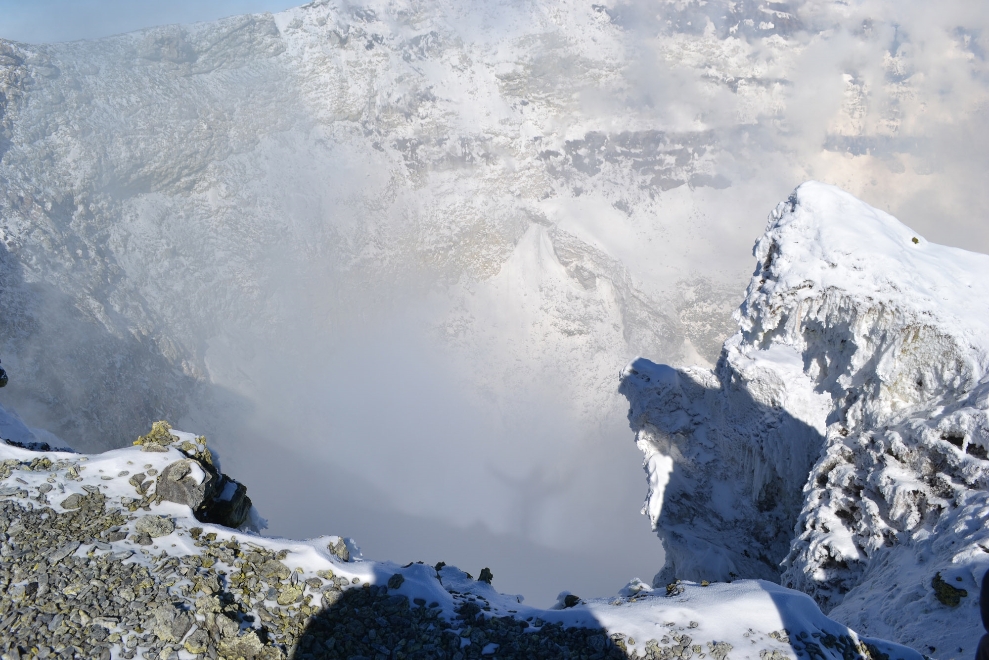

Most anorthoclase-phyric lavas, characteristic of Mt. A short pulse of effusive activity marked by crustal contamination occurred ~160 ka as indicated by at least two trachytic flows (157☖ and 166☑0 ka). The initiation of anorthoclase tephriphonolite occurred in the southwest sector of the volcano at and around Turks Head (243☑0 ka). Plagioclase-phyric phonotephrite from coastal and flank flows yield ages between 531☓8 and 368☑8 ka. Younger lavas (~550–250 ka) on a modern-Erebus edifice are characterized by phonotephrites, tephriphonolites and trachytes. The termination of proto-Erebus eruptive activity is marked by the stratigraphically highest flow at Fang Ridge (758☒0 ka). Cessation of the shield-building phase is marked by eruptions at Fang Ridge at ~1,000 ka. It is inferred that a further ~300 ky of basanitic/phonotephritic volcanism built a low, broad platform shield volcano. It shows a transition from sub-aqueous to sub-aerial volcanism that may mark the initiation of proto-Erebus eruptive activity.

Cape Barne, the oldest site, is 1,311☑6 ka and represents the first of three stages of eruptive activity on the Mt. Twenty-five sample sites were dated by the 40Ar/ 39Ar method (using 20 anorthoclase, 5 plagioclase and 9 groundmass concentrates) to examine the eruptive history of the volcano. Although excess argon is known to exist within the melt inclusions, rigorous sample preparation was used to remove the majority of the contaminant. Anorthoclase feldspars in the phonolitic lavas are large (~10 cm), abundant (~30–40%) and contain numerous melt inclusions. The older basanite to phonotephrite lavas crop out on Fang Ridge, an eroded remnant of a proto-Erebus volcano and at other isolated locations on the flanks of the Mt. Erebus, a 3,794-meter-high active polygenetic stratovolcano, is composed of voluminous anorthoclase-phyric tephriphonolite and phonolite lavas overlying unknown volumes of poorly exposed, less differentiated lavas.


 0 kommentar(er)
0 kommentar(er)
